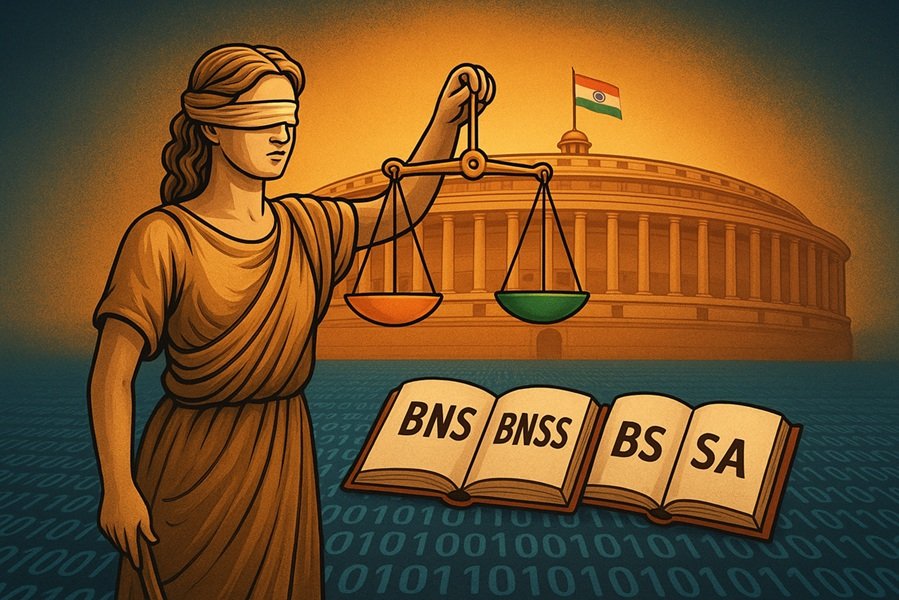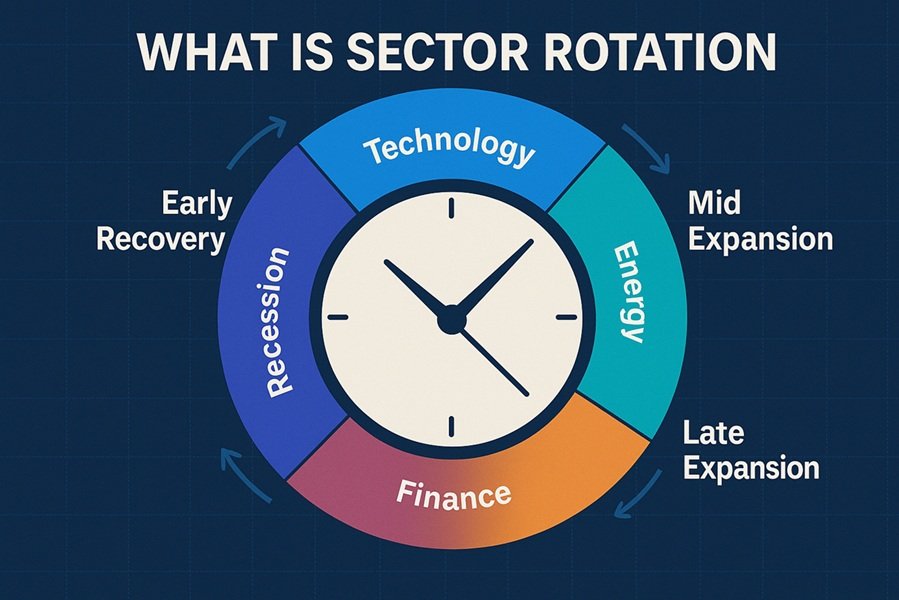
Introduction: A Landmark Shift in India’s Legal System
India’s criminal justice system has entered a historic transformation with the introduction of three new laws — Bharatiya Nyaya Sanhita (BNS), Bharatiya Nagarik Suraksha Sanhita (BNSS), and Bharatiya Sakshya Adhiniyam (BSA).
These laws came into effect on 1st July 2024, replacing the Indian Penal Code (1860), Code of Criminal Procedure (1973), and Indian Evidence Act (1872) — three pillars of colonial-era criminal jurisprudence.
The new framework aims to “Indianize justice”, modernize legal procedures, promote speedy trials, and align criminal justice with technological advancements such as digital evidence, e-FIRs, and forensic tools.
The Three New Laws at a Glance
| New Law | Replaces | Focus Area | Year Enacted |
|---|---|---|---|
| Bharatiya Nyaya Sanhita (BNS), 2023 | Indian Penal Code, 1860 | Defines crimes and punishments | 2023 |
| Bharatiya Nagarik Suraksha Sanhita (BNSS), 2023 | Code of Criminal Procedure, 1973 | Investigation, trial, and procedural law | 2023 |
| Bharatiya Sakshya Adhiniyam (BSA), 2023 | Indian Evidence Act, 1872 | Admissibility and evaluation of evidence | 2023 |
1. Bharatiya Nyaya Sanhita (BNS), 2023 — Redefining Crimes and Punishments
The Bharatiya Nyaya Sanhita (BNS) is the new substantive criminal law of India, replacing the IPC. It contains 358 sections (down from 511 in the IPC), removing outdated provisions and reorganizing others to improve clarity and accessibility.
🔹 Key Highlights of BNS
- Simplification and Indianization of Language
Archaic colonial terms have been replaced with simplified, Hindi-origin terms like ‘Nyaya’ (Justice) and ‘Sanhita’ (Code). - Focus on Victim-Centric Justice
BNS introduces new provisions for crimes against women and children, sexual assault, gang rape, and acid attacks, enhancing punishments and ensuring speedy trial mechanisms. - Introduction of New Offences
- Mob lynching is recognized as a distinct offence.
- Terrorism and organized crime are specifically defined and penalized.
- Community service is introduced as a punishment for minor offences.
- Abolition and Modification of Outdated Provisions
- Sedition law (Section 124A IPC) has been replaced with a new section dealing with “acts endangering the sovereignty, unity, and integrity of India.”
- Certain colonial-era offences like “unnatural offences” have been updated in line with Supreme Court rulings.
- Digital and Cyber Offences
Recognizes cybercrimes, identity theft, and online fraud, marking India’s first comprehensive digital-age criminal code. - Stringent Punishment for Heinous Crimes
The BNS mandates death or life imprisonment for crimes like gang rape of minors and terrorist killings.
2. Bharatiya Nagarik Suraksha Sanhita (BNSS), 2023 — Modernizing Criminal Procedure
The BNSS replaces the CrPC and contains 531 sections (up from 484), reorganized for clarity and modernization. Its focus is to make the justice process faster, transparent, and citizen-friendly.
🔹 Key Reforms Under BNSS
- E-FIR and Digital Procedures
- Citizens can now register FIRs electronically for cognizable offences.
- Police can serve electronic summons via email or SMS.
- Digital documentation is admissible in all stages of investigation and trial.
- Time-Bound Investigations
- Investigations must be completed within 90 days, extendable to 180 days in serious crimes.
- Charge sheets are to be filed electronically.
- Forensic and Technological Integration
- Mandatory forensic collection in cases of offences punishable by 7 years or more.
- States will establish forensic laboratories to support digital and DNA evidence.
- Trial Reforms
- Courts can conduct video conferencing for witnesses and record digital testimony.
- Bail hearings, remand orders, and case status can be processed digitally.
- Citizen-Oriented Provisions
- Victims can now track case progress online.
- Certain minor offences allow for community service instead of imprisonment.
- Police Accountability
BNSS defines clearer guidelines for arrests, search, and seizure, ensuring human rights protections while maintaining national security needs.
3. Bharatiya Sakshya Adhiniyam (BSA), 2023 — Evidence in the Digital Era
The Bharatiya Sakshya Adhiniyam (BSA) replaces the Indian Evidence Act and introduces modern standards for digital, electronic, and forensic evidence.
🔹 Key Provisions of BSA
- Recognition of Digital Evidence
- Emails, messages, CCTV footage, cloud data, and digital logs are recognized as primary evidence.
- Blockchain and digital signatures are included as valid proof of authenticity.
- Simplification of Evidence Process
The structure is reduced to 170 sections, focusing on logical presentation, admissibility, and relevance. - Presumption of Authenticity for Electronic Records
If a record is generated or stored in a legally compliant system, its authenticity is presumed unless challenged with credible counter-evidence. - Witness Protection and Testimony
- Allows video-recorded depositions and cross-examinations.
- Protects vulnerable witnesses through confidentiality clauses.
- Burden of Proof and Presumptions Updated
The law refines earlier presumptions in cases involving sexual offences, digital transactions, and fraud, making them technology-compliant.
Implementation and Impact
The new laws officially came into force on 1 July 2024, but implementation is being rolled out in phases across states and Union Territories.
🔸 Expected Benefits
- Speedier trials and reduced backlog.
- Transparency through e-tracking and digital evidence.
- Ease for citizens in filing complaints and tracking cases.
- Reduced colonial influence — aligning criminal law with India’s constitutional values.
🔸 Challenges Ahead
- Training police, prosecutors, and judges in digital and forensic methods.
- Upgrading infrastructure, especially in rural courts.
- Translating laws into regional languages for grassroots accessibility.
- Avoiding misuse of broad definitions like those under sovereignty-related offences.
Comparison Table — Old vs. New
| Aspect | Old System | New Framework |
|---|---|---|
| Substantive Law | Indian Penal Code (1860) | Bharatiya Nyaya Sanhita (2023) |
| Procedural Law | CrPC (1973) | Bharatiya Nagarik Suraksha Sanhita (2023) |
| Evidence Law | Indian Evidence Act (1872) | Bharatiya Sakshya Adhiniyam (2023) |
| Colonial Terms | King/Queen, Her Majesty | Indian Republic context |
| Digital Evidence | Limited scope | Comprehensive coverage |
| E-FIR | Not allowed | Allowed nationwide |
| Community Service | Not recognized | Legally introduced |
| Forensic Role | Optional | Mandatory for serious crimes |
| Sedition | Section 124A IPC | Replaced by “Sovereignty Offence” |
| Trial Duration | Often delayed | Mandated time limits |
Conclusion — Towards an Indianized, Tech-Driven Justice System
The BNS, BNSS, and BSA together represent the most comprehensive overhaul of India’s criminal justice system since Independence.
They aim to deliver citizen-centric, efficient, and technology-enabled justice while shedding colonial remnants.
However, the real success will depend on implementation — effective training, digital infrastructure, and judicial efficiency.
If executed well, these laws could redefine how justice is delivered in India — faster, fairer, and future-ready.








